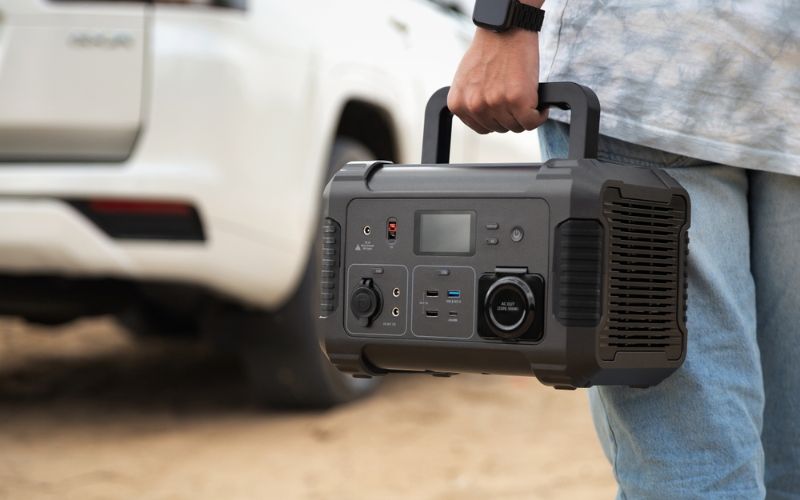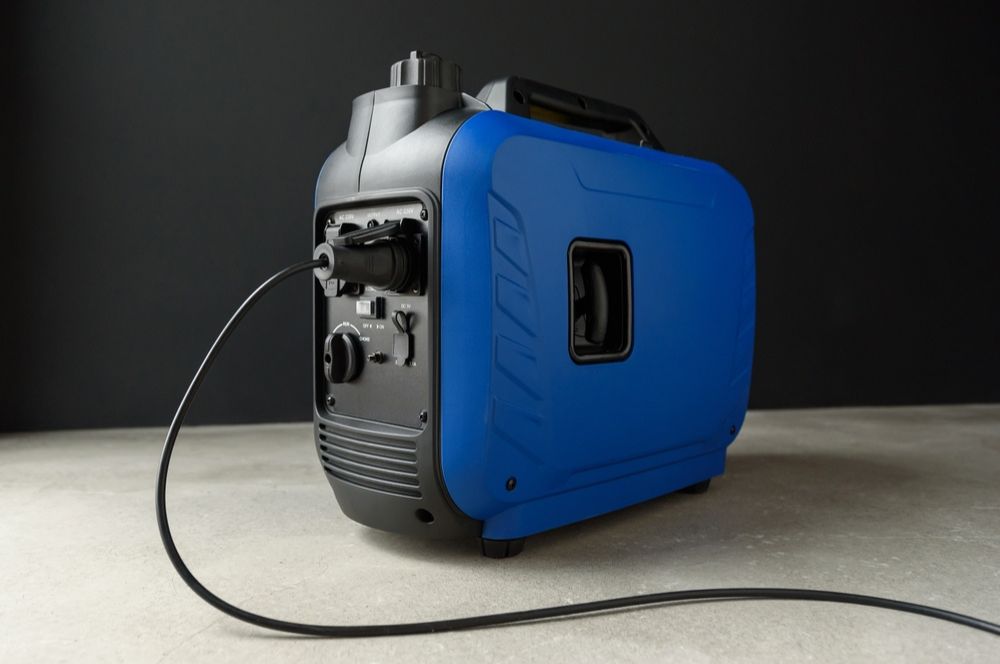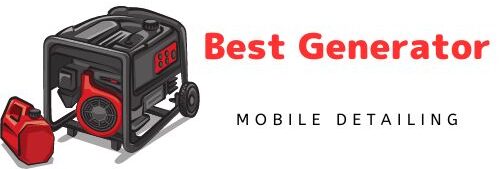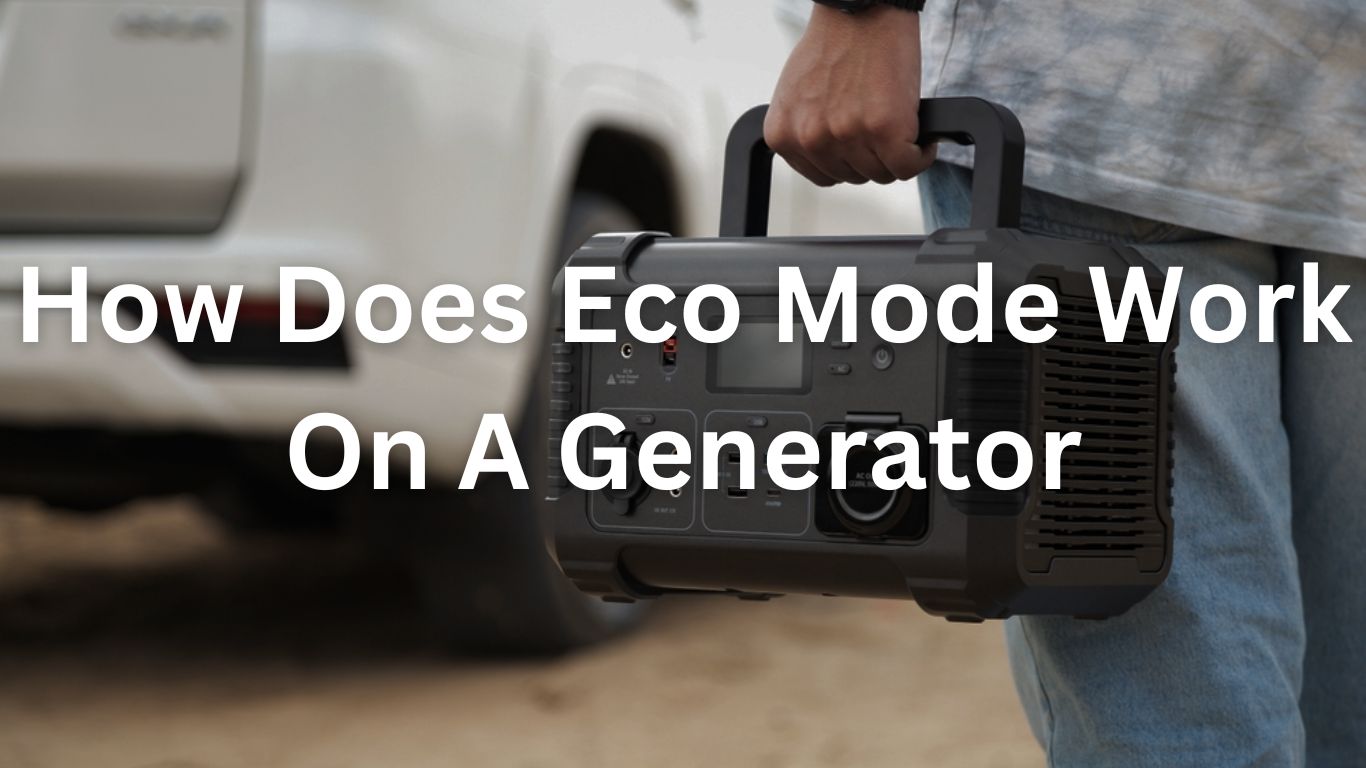Generators power our world, from construction sites to mobile detailing rigs. At Best Generator For Mobile Detailing, we’ve noticed a growing fascination with eco mode. But how does eco mode work on a generator? This fuel-saving feature promises to revolutionize portable power use, yet many don’t fully grasp its mechanics.
In this guide, we’ll unravel the mystery behind eco mode, exploring its inner workings, benefits, and potential drawbacks. Whether you’re a pro or a homeowner, understanding this technology can boost your generator’s efficiency and shrink your carbon footprint. Ready to discover the science behind the savings? Let’s dive in.
How Does Eco Mode Work On A Generator?
Eco mode, also known as economy mode, is a special operating mode that optimizes generator performance for enhanced energy efficiency. In this mode, the generator’s engine speed is adjusted based on the electrical load, allowing it to run at lower RPMs during periods of reduced power demand, resulting in significant fuel savings and quieter operation. Similar to the eco mode found in UPS systems, the generator’s inverter remains off as long as the incoming power supply is stable and within tolerance. This bypass mode allows the generator to operate at maximum efficiency, conserving fuel and reducing noise pollution.
How Eco Mode Differs from Standard Operation
In standard mode, a generator maintains a constant engine speed regardless of load. Eco mode, however, introduces dynamic responsiveness:
- It monitors power draw in real-time
- Engine speed fluctuates with demand
- Idle speed drops during low-load periods
- Full power kicks in when needed

The Mechanics of Eco Mode
Eco mode is an advanced feature in modern generators designed to optimize fuel efficiency by dynamically adjusting engine performance based on real-time power demand.
At its core, eco mode uses throttle control, managed by an electronic governor, to regulate the fuel and air mixture entering the engine. Sensors constantly monitor the electrical load, allowing the engine’s RPM (revolutions per minute) to decrease when demand is low and increase when more power is needed.
This adaptive adjustment not only conserves fuel but also minimizes engine wear and reduces emissions, making eco mode an environmentally friendly and cost-effective solution for varying power needs.
When to Use Eco Mode On a Generator
Eco mode on a generator is most effective when running in low-power scenarios, where efficiency and quiet operation are key. It’s ideal to activate eco mode during periods of minimal power demand, such as when powering small appliances, charging devices, or running energy-efficient lighting. This feature is also perfect for noise-sensitive environments like campgrounds or residential areas, where reduced engine speed means quieter operation.
However, eco mode may not be suitable for all types of equipment, particularly motor-driven or sensitive devices that require a consistent and higher level of power. It’s best used with resistive loads, like heaters or light bulbs, and modern electronics equipped with voltage regulators. By strategically engaging eco mode, users can conserve fuel, lower noise levels, and extend the life of their generator in appropriate conditions.

Eco Mode and Fuel Economy
One of the primary reasons eco mode has gained popularity is its potential for significant fuel savings. But how exactly does this feature impact your generator’s fuel consumption? Let’s dive into the numbers and explore the long-term benefits of using eco mode.

Analyzing Fuel Savings
Eco mode’s impact on fuel efficiency is substantial. Typical fuel reduction ranges from 20% to 40%, though these savings can vary based on load patterns and generator model. The greatest benefits are seen during prolonged low-load operation, where the generator isn’t constantly running at full capacity.
Eco Mode vs. Standard Mode Comparison
To understand the difference, let’s compare eco mode to standard operation. In standard mode, fuel flow remains constant regardless of the load. Eco mode, however, adapts fuel consumption to match power demand. Real-world tests have shown up to 50% less fuel used in eco mode during light loads, demonstrating its impressive efficiency.
Long-Term Cost Benefits
The cumulative effect of eco mode can be striking. By extending runtime per tank of fuel, you’ll find yourself refueling less frequently. This translates to lower overall operational costs over the generator’s lifespan. This feature isn’t just about immediate savings—it’s an investment in long-term efficiency. It can lead to smarter power management and a healthier bottom line for your mobile detailing business or any operation relying on portable power.
Potential Challenges with Eco Mode
While eco mode offers numerous benefits, it’s not without its complexities. Understanding these challenges can help you navigate potential issues and make the most of this fuel-saving feature. Let’s explore some common hurdles and their solutions.
The Inverter and Generator Eco Mode Conflict
One of the most significant challenges arises when pairing eco mode with certain inverter systems. This conflict can lead to power fluctuations and inefficiencies. The root of the problem lies in how eco mode adjusts engine speed based on load, which can sometimes clash with an inverter’s power management system. To mitigate this, some users opt for inverters specifically designed to work harmoniously with eco-mode generators.
Solutions for Common Issues
Many eco-mode challenges have straightforward solutions. For instance, if you’re experiencing frequent cycling between high and low speeds, try grouping your power draws to create a more consistent load. Additionally, some generators now feature advanced eco-mode algorithms that can better handle varying loads, reducing the likelihood of rapid speed changes.
Compatibility with Automatic Transfer Switches
Another consideration is the interaction between eco mode and automatic transfer switches (ATS). Some ATS systems may not recognize the variable output of an eco mode generator, potentially causing transfer delays or failures. To address this, manufacturers are developing smarter ATS units capable of adapting to eco mode’s dynamic power output.
When Not to Use Eco Mode
While eco mode is great for saving fuel, it’s not always the best choice. Knowing when to turn it off is key to getting the most out of your generator. Let’s look at times when regular mode might be better.

High-Load Situations
When you need a lot of power at once, eco mode might struggle. If you’re running several big appliances or power tools at the same time, your generator needs to keep up a steady, high output. In these cases, switching to regular mode makes sure you get a steady flow of power without ups and downs that could harm your gear or stop your work.
Powering Sensitive Electronics
Some fancy electronic devices need a steady power source without small changes. The changing engine speed in eco mode can sometimes cause tiny power shifts. For things like high-end sound systems, precise measuring tools, or some medical devices, it’s often safer to run your generator in regular mode to give the steadiest power possible.
When You Need Steady Power
Some jobs need power that never wavers. For example, when powering important systems in a mobile medical unit or running delicate industrial tasks, even small power changes can be risky. In these cases, saving fuel with eco mode isn’t worth the risk of unsteady power.
Eco Mode and Load Management
This interplay can significantly impact your generator’s performance and efficiency. Let’s explore how eco mode handles varying loads and the role of soft start technology in this process.
How Eco Mode Responds to Varying Loads
Eco mode shines in its ability to adapt to changing power demands. When the load increases, the generator quickly ramps up its engine speed to meet the need. As the load decreases, it scales back, saving fuel. This dynamic response ensures you’re not wasting energy when demand is low, but you still have power when you need it.
Soft Start Technology and Eco Mode
Soft start technology is a game-changer when it comes to eco-mode efficiency. This feature gradually increases power to appliances, reducing the initial surge of electricity. For eco mode, this means less stress on the system when devices kick on, allowing for smoother transitions between low and high-power states.
Balancing Efficiency and Power Output
Finding the sweet spot between fuel savings and reliable power output is key. Eco mode excels at this balancing act, but it requires some thoughtful load management. Grouping similar power-draw devices together and staggering the start-up of high-demand appliances can help eco mode work more effectively.
Conclusion
Eco mode is a game-changer for generator efficiency, but it’s not a one-size-fits-all solution. At Best Generator For Mobile Detailing, we’ve seen how understanding eco mode’s workings can transform power management. By balancing load requirements with eco-mode capabilities, you can maximize fuel savings and minimize noise. Remember, the key is knowing when to engage in eco mode and when standard operation is best. Whether you’re running a mobile detailing business or managing a construction site, smart use of eco mode leads to cost-effective, efficient operations. Master this feature, and you’ll unlock your generator’s full potential.
FAQs
Can I run all appliances on eco mode?
Not all appliances work well with eco mode. It’s best for devices with steady power needs. Large motors or sensitive electronics might need standard mode.
Does eco mode affect the generator’s lifespan?
Eco mode can actually extend your generator’s life. Less runtime at full speed means less wear and tear on the engine.
How much fuel can I save using eco mode?
Fuel savings vary, but you can expect to cut consumption by 20-40% in ideal conditions. At Best Generator For Mobile Detailing, we’ve seen some clients save even more.
Is eco mode safe for sensitive electronics?
It’s generally safe, but for very sensitive equipment, standard mode might be better. Always check your device’s power requirements.
Can I switch between eco mode and standard mode while the generator is running?
Most modern generators allow this but always consult your manual. Sudden load changes while switching can stress the system.
Marion Woods is an accomplished generator technology expert with over 15 years of experience, currently serving as the Chief Technology Officer at GenTech Power Solutions. She holds a Master’s degree from MIT and specializes in enhancing generator efficiency and integrating renewable energy sources. Marion is a respected author and speaker in the engineering community, dedicated to pioneering sustainable power solutions.


1 thought on “How Does Eco Mode Work On A Generator?”